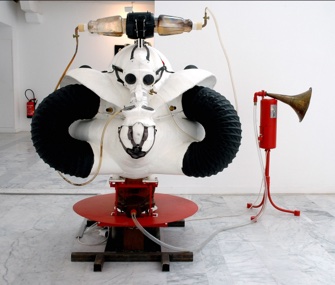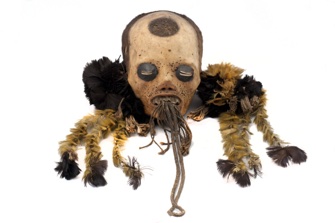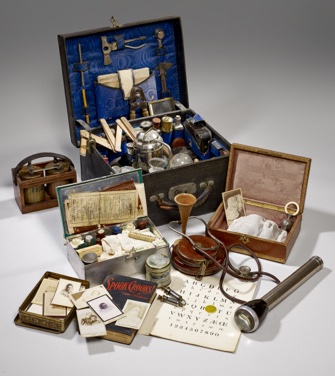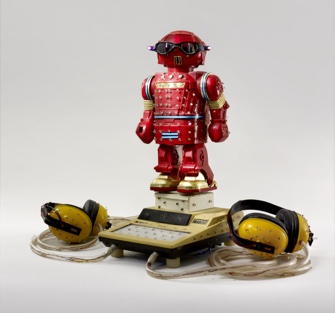
We humans are so vain that we like to see representations of ourselves everywhere and attribute our own thoughts and emotions to other creatures. “Persona: Strangely Human,” a new exhibition at the Musée du Quai Branly, explores this anthropomorphizing tendency in a most entertaining way and from every possible angle.
The show draws on a wealth of disparate pieces to illustrate its theme, including contemporary art, traditional artifacts and robotics, including many fascinating oddities like a flea circus with the miniscule bugs dressed up as people; Eliza, one of the first artificial intelligence programs, invented in 1960, which visitors can converse with on a primitive computer; or a “love doll,” a realistic, full-sized female doll that some men in Japan actually marry.
Among the traditional objects are anthropomorphic figures, masks, objects used for divination, shrunken heads, puppets,

amulets, ex votos and more from various cultures and time periods.
Many of the contemporary art installations incorporate movements that add to their aura of humanity, like “Babot Rouge” (1984), Takahashi Shiro’s giant red blowup doll of an octopus that repeatedly hits itself on the head with its tentacles, or Christiaan Zwanikken’s “The Good, the Bad and the Ugly” (2005), an animated sculpture with three talking birds’ heads. Both of these works are somehow spellbinding.
The exhibition also looks at how we try to humanize the supernatural world. We learn, for instance, that the great inventor and man of science Thomas Edison was willing to believe in the possibility of ghosts, as long as it could be scientifically proven. Unfortunately, the experiments he participated in failed to capture any spirits from the other side, and Edison kept the whole thing quiet. Did these experiments influence the view he expressed just before he died in 1931: “Rather than individual souls, we perhaps have one great soul – the soul of the entire universe, and this is the sum total of all the little particles that make us what we are.”
Others were more gullible, as demonstrated by such exhibits as photos purporting to show images of spirits or an impressive ghost-

busting kit used in Belgium in the first half of the 20th century that includes everything from a camera for capturing images, a typewriter for taking notes, a manual for detecting frauds, thermometers for measuring temperature drops in the presence of a spirit and a coffee machine to keep the spirit hunter awake during long nights of ghost-busting.
The exhibition also explores engineer and

A Japanese toy converted into a future-predicting divination robot in Mumbai.robot-maker Masahiro Mori’s theory of the “uncanny valley,” which posited that people would respond positively to human-like robots, but only up to a point. When the artificial beings reached a certain realism, people would be repelled by them – this is the uncanny valley – but as they became even more human-like, they would once again respond positively. This is where the exhibition brings in such repulsive human-like objects as the shrunken heads and highly realistic wax sculptures of diseased humans once used for medical education.
Kids will love this fascinating exhibition, even (or especially) the gross stuff, but I can recommend it to adult humans as well. It’s both fun and thought-provoking.
Favorite
